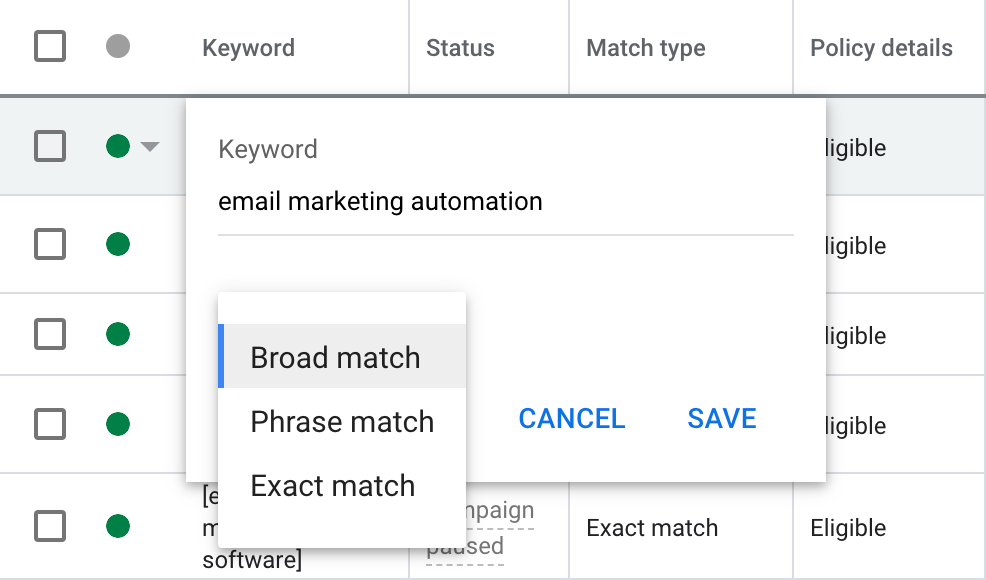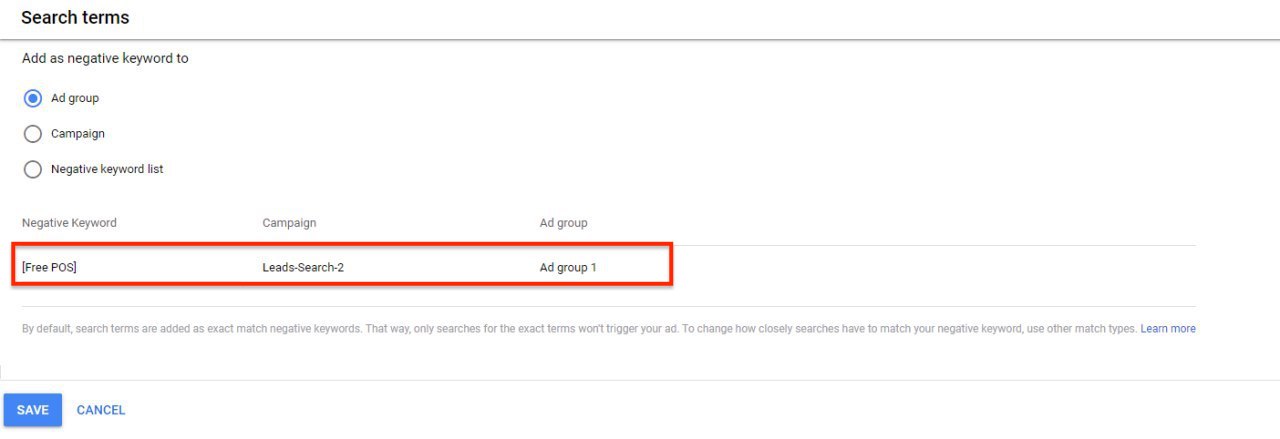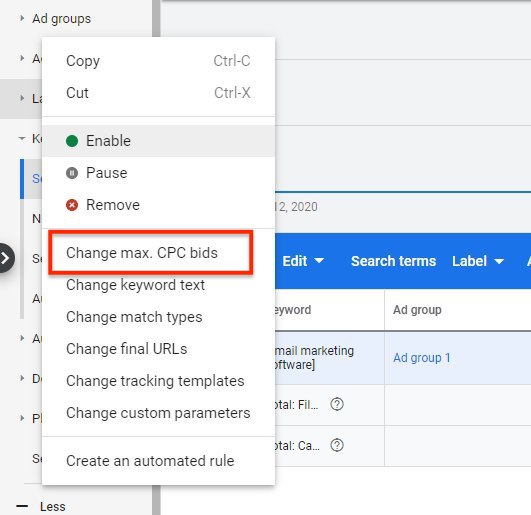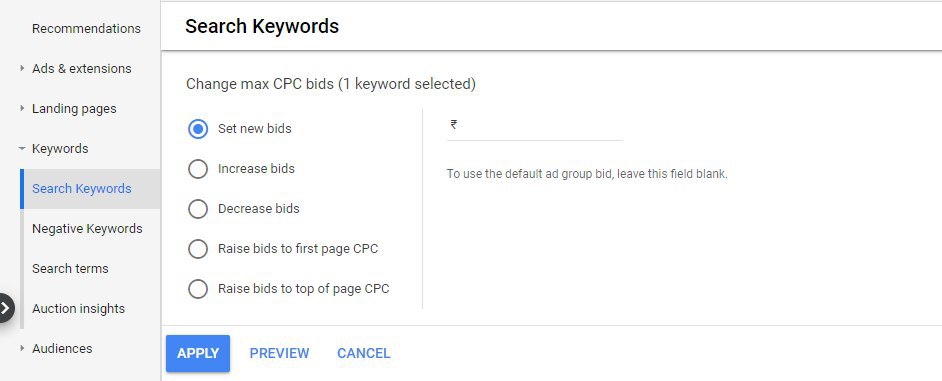When it comes to B2B lead generation, Google Ads has always been an effective advertising platform for B2B brands.
However, running a successful B2B PPC campaign on Google Ads isn’t as easy as it sounds. You can set up a campaign easily but maintaining the quality of traffic and leads that it attracts is entirely a different game.
Sometimes, you may see that your campaigns are performing well in terms of CPC, conversion and other metrics. But, as a B2B marketer, you have to look beyond your Google Ads analytics.
You have to make sure that the leads that you are producing from PPC campaigns are qualified for sales and are worth paying for.
In this article, I will be sharing proven tactics for B2B Google Ads campaigns that you can use to generate quality leads.
Ready? Let’s get started.
1. Improve Quality Score of your ads
Google uses quality scores to determine the positioning of your ads in search results. It is basically a way to rate the quality of your ads and keyword relevancy to determine the ad rank in the search results.
There are several factors that can affect the quality score of your ads and some of them are as follows-
- Click-through-rate (CTR)– It is considered to be the most important factor in quality scoring. The higher the CTR your ads gain, it shows that people find your ad copy relevant and Google will push it higher for better performance.
- Landing Page Quality – If people click on your ad but bounces back immediately, then it shows that your landing page isn’t relevant and can downgrade your quality score.
- Ad Copy – The quality score also depends on how effective your ad copy is. Adding targeted keywords in the headline and description can add to your quality score.
The quality score lies between 0 and 10 and higher the score you gain, the better your ads will perform because it shows that your PPC ad is relevant for your targeted audience and people are engaging with it.
2. Do smart campaign structuring
Many marketers just structure their PPC campaign on Google Ads based on the services and products they offer.
But there are a lot of ways of setting up campaigns and ad groups. For instance, you can create ad groups for each customer personas you have defined for each product/service which is represented by campaigns.
Similarly, you can structure your campaigns based on –
- Sub-categories
- Features
- Industry Targets
- Benefits
- Locations
Structuring your campaign in this way allows you to target a very specific audience keeping the relevancy of ads intact. Basically, you can serve more personalized ads to your target audience.
Once you have defined the structure of your campaign, you can identify different sets of keywords for each ad group, create specific ads and landing pages.
3. Target keywords with search intent
Keyword research is a crucial part of a successful PPC campaign. There are various keyword research tools to help you with it.
However, keyword research is not just about finding the keywords with high search volume and determining average CPC. It is more about identifying the keywords that your target audience searches at different stages of the buying process.
Once you have defined the structure of your ad campaign as discussed in the previous section, you should run different search intent keywords for each ad group.
For example, the keyword like “POS system for restaurant” shows that the searcher is looking for a POS system for his/her restaurant.
While the search term like “ Best POS system for restaurant” shows that the searcher is in the consideration stage and looking for the best options available out there.
By targeting keywords with search intent and creating targeted ads that provide required information to the searcher at every stage of the decision-making process, you can drive them toward conversion by staying on top of their mind throughout the funnel.
4. Use the right keyword matches.
When you select target keywords for your Google Ad campaign, you have to select the match types for each keyword.
Match types basically tell Google how broad you want your keywords to match with search terms. There are three keyword match types on Google Ads –

1. Broad Match Type: It is the default keyword match type on Google Ads. When you use the match type, your ad is eligible to appear whenever a user’s search term includes any word from your keyphrase.
For example, if you use broad match to target “POS system for restaurant”, your ad might display for search terms like “POS design”, “how to use POS system” and even for terms like “best restaurants”
2. Phrase Match Type: Using this match type, your ad will only appear when a user searches the exact phrase in the exact order you enter them but there can be other terms before and after.
For example, if your key phrase is “POS software for retail”, your ad can appear if the user searches for “Best POS software for retail brands”, “POS software for retail brands in India” etc.
Since the search query can include additional terms before or after your phrase, you can reach a wider audience with different search intent.
3. Exact Match Type: This is the most restrictive keyword match type. If you use this match type on your search terms, users will only see ads if they enter the exact search query that you have defined.
However, your ads may appear if the words are misspelt, plurals or other close grammatical variants. For example, if your target search term is “POS for restaurants”, your ad can appear for search queries like “POS for restaurant” but not for “POS system for restaurants”.
These keyword matches are very crucial to avoid irrelevant ad clicks and unqualified leads. Using these keyword matches, you can ensure that your ad appears to users with specific search queries.
5. Filter out negative keywords
One key to a successful PPC campaign is choosing what not to target and where not to appear. And this is where negative keywords come into the picture.
Negative keywords are those search terms for which you don’t want your ads to appear. When selecting negative keywords for search campaigns, look for search terms that are similar to your keywords, but might cater to customers searching for different products or services.
In the previous section, we have talked about keyword match types. So, if you’re using exact match type for keywords, you may not need to focus on this.
But if you are using broad and phrase match types, you need to keep an eye on the keywords your ads are appearing for and mark negative to the irrelevant ones.
For example, if your keyword is “POS software for restaurant” then you don’t want to rank for search queries like “Free POS”, “POS for retail” or any such queries which are not related to your product.

6. Use Ad copy to pre-qualify visitors
When it comes to lead quality, you need to focus on the ad copy to leave no doubt about your offerings to the users.
You have to be clear upfront so that the least qualified users can be averted from clicking your ads.
In order to pre-qualify visitors, you can make your headline more clear in a way that the user gets a clear idea about whom the product is and if it is relevant for them.
For example, if your company sells CRM which is relevant for venture capitals only, then you want to avoid clicks from freelancers, small business and individual brands by stating your target industry by adding the keyword like “for venture capital” in the headlines as shown below.

To pre-qualify your visitors, you can include following information about your offerings in the ad copy –
- Industry (Eg. – Restaurant, Agency, Retail)
- Company size (Eg. – Small businesses, Startups)
- Pricing (Eg. – Free or start at $9/month)
- Buyer persona (Eg. – Freelancers, small business owners)
7. Create tailored landing pages for each ad groups
Most marketers either direct traffic from ads to the homepage or a common landing page on their site. It is not really a good idea!
You need specific landing pages targeting a specific set of audience with the only objective to convert the visitor once they click on your ad.
Once a visitor lands on your landing page, you have already been charged. So, your all focus should be on how you can convert that visitor.
Here are a few tips that you must consider to improve the conversion rate of your landing page.
- Clearly state your value proposition
- Keep the value proposition/offering above the fold
- Ensure that the CTA is clearly visible
- Keep your form fields relevant and short.
- Ensure that the content is matching your ad copy.
Remember that ads can only grab the attention of your audience but it is your landing page where they know more about your offerings and take required actions. So, dedicate a good time to design your landing pages.
8. Optimise Maximum CPC bids for keywords
Once your campaign starts showing some data, keep your eyes on the performance of each keyword and optimise the max CPC bids for the keywords to improve the results.
You can easily edit the max CPC of keywords. Here’s how to do this-
- Select the one or more keywords in the search keyword list
- Select “Edit maximum CPC bid” from the edit panel.

- Now, select how you want o bid for the selected keywords

- Click “Apply” and the new CPC bids will be applied to selected keywords.
The objective of changing the max CPC for keywords should be to make sure that you are bidding enough to outrank your competitors and appear on search results.
Alongside, you also have to be smart enough to decide which keyword to let go and how much you bid so that you don’t spend over your budget but end up with good ROI.
9. Change bid adjustment for devices
Let’s say your PPC campaign has been running for a while and you have got plenty of leads from it.
Now, when it comes to PPC campaigns, it is a good practice that you track the device that your leads have been using while they interacted with your ads.
So, if you have got such data, analyse it and determine which device is performing well in terms of quality and adjust the bidding accordingly.
For instance, if you find that most of your qualified leads are coming from desktop devices and your campaign is performing well on desktop devices with a max CPC bid of $3. Then, to show your ad to more searchers on desktop devices, you can increase your bid by 20% for desktop ads, resulting in a final bid amount of $3.60.
Similarly, if your ads are underperforming on mobile devices, you can decrease the CPC bid to a certain percentage so that your ads won’t appear much on mobile devices. Or if you want to opt-out of showing ads on let’s say tablet devices, decrease your bid by 100% for tablet devices.
Wrapping Up
B2B lead generation using PPC campaigns is a brilliant way only if you keep your eyes on metrics and keep optimizing it so that it reaches to the right audience and you spend less on irrelevant clicks and conversions.
If you follow all the tips mentioned above, you are surely going to improve the quantity and quality of leads from Google search ads.
So, have I missed any tip to improve the quality of B2B leads from Google Ads? Let me know via comments below.
